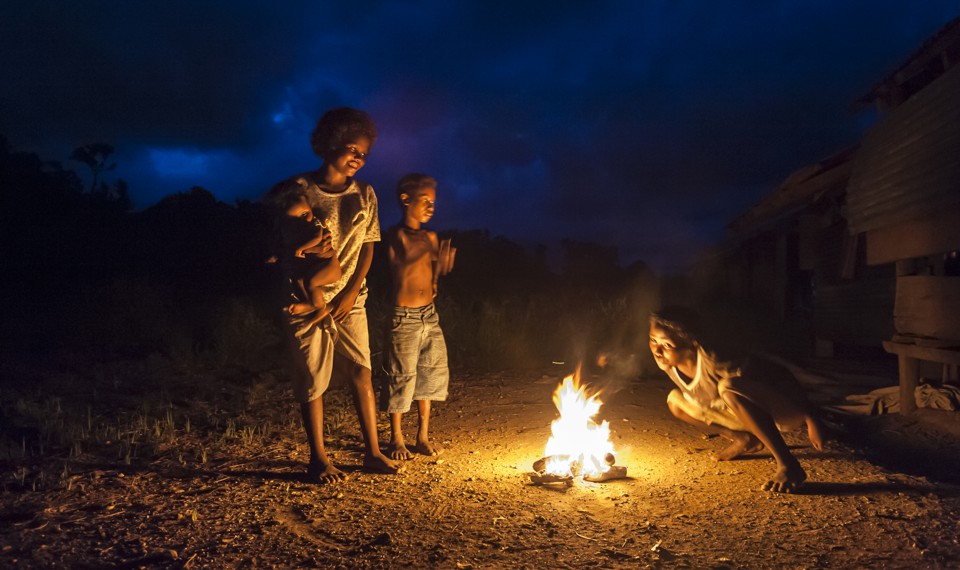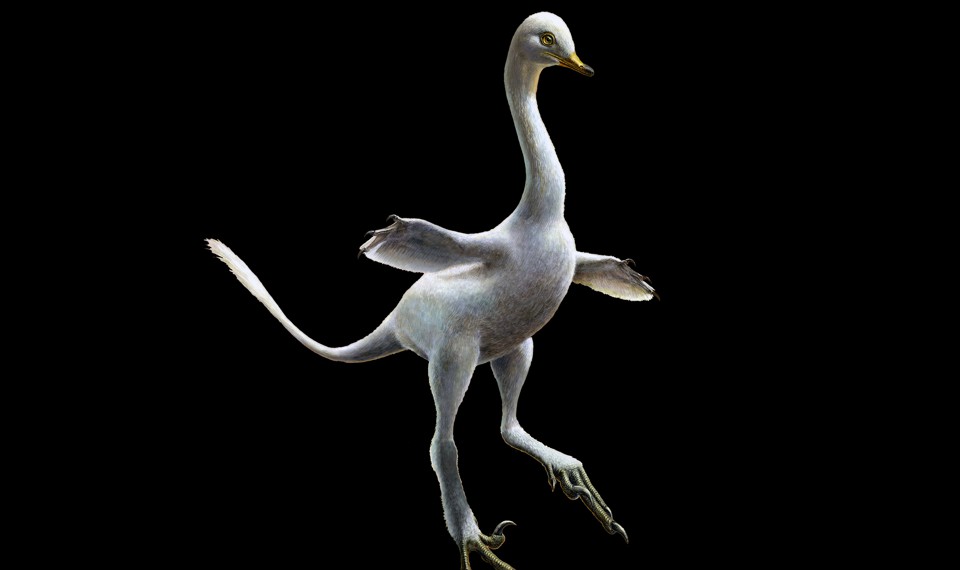The Ed's Up #208

The Desirability of Storytellers
"At first, Migliano wasn’t actually interested in storytelling. She wanted to know what qualities the Agta most value in their peers, given that they are nomadic and their camps continuously shift. So, her students asked 300 Agta to name the five people they’d most want to live with. They also asked the volunteers to nominate the strongest people they knew; the best hunters, fishers, and foragers; the ones whose opinions are most respected; and the ones with most medical knowledge. And finally, almost as an afterthought, they asked the volunteers to name the best storytellers. That, they assumed, was something relatively unimportant, and would make for an interesting contrast against the other more esteemed skills. In fact, the Agta seemed to value storytelling above all else." (Image: Jacob Maentz)

Apparently This Is What a Swimming Dinosaur Looks Like
"The creature was clearly a small predator, much like Velociraptor. Its feet even had the distinctive sickle-shaped claws that clinked across the kitchen floor in Jurassic Park. But its long neck and tapering snout resembled those of a swan. Its arms and hands also had unusual proportions—something halfway between the grasping limbs of other raptors and the flattened flippers of modern penguins. It looked like a Velociraptor that had adapted for life in the water—that is, if it was even an actual dinosaur “It was so strange that we suspected that it might have been a chimera—a mix of different skeletons glued together. It wouldn’t be the first time,” says Andrea Cau from the University of Bologna, who joined Godefroit’s investigation. “We had to be sure that it was a real dinosaur and not a fake.” (Image: Lukas Panzarin)

How to Tell If a Dinosaur Is Fake
"More often, actual fossils are touched up to make them more dramatic. Another Tarbosaurus, which was famously seized by the American government in 2012, was mostly real, but its teeth, fingers, and toes had all been reconstructed. Feathered dinosaurs are all the rage, so artisans will sometimes paint the outlines of feathers on their fossils. One dinosaur had a crest added to its skull by fossil-poachers, who wanted to make it look more dramatic and complete; scientists spent so much time removing the extra material that, in a bit of questionable victim-blaming, they named the beast Irritator. And by some estimates, around 80 percent of the marine reptile specimens that are on display in local and regional Chinese museums have been “altered or artificially combined to varying degrees.” (Image: Peter Nicholls)
We Might Absorb Billions of Viruses Every Day
"Barr and his colleagues at San Diego State University had grown a layer of gut cells in a dish, much like those that line the surface of our own twisting intestines. The cells formed such tight connections with each other that bacteria couldn’t sneak past them. Even a dye couldn’t get through. The layer was meant to be impermeable, until the team infused the water on one side of it with viruses called phages. After a few hours, they found a few of these phages on the other side. The cells had absorbed them at one end, and shoved them out the other. Barr believes that the same process happens in our bodies, frequently and relentlessly. If he’s right, it means that our guts are absorbing billions of viruses every day, sending a steady stream of them into our bloodstream and the rest of our organs." (Image: Alfred Pasieka)
Friends of the Ed's Up
This is a new section where I'm going to promote the work of people I care about--people who make incredible art that I think is worthy of your attention and support, but whose fierce intelligence is also match by a genuine warmth of spirit.
Story Collider features true personal stories about science. In the latest episode of the podcast, Maia Pujara wonders if she’ll be able to finish her PhD after a bout of sudden illness, and after growing up in humble circumstances in St. Lucia, Whitney Henry copes with imposter syndrome at Harvard. Directors Liz Neeley and Erin Barker also run workshops teaching storytelling skills to scientists. And there are live shows coming up in New Orleans (Dec 14), New York (Jan 9), San Diego (Jan 11), and Toronto (Jan 17).
Flash Forward is a podcast about the future run by Rose Eveleth. It's part radio drama, part science journalism, and a lot of fun. The latest episode features an AI that binged on religious texts.
Gastropod is a food, science, and history podcast run by Cynthia Graber and Nicola Twilley. The latest episode is on our long love affair with olive oil.
The Brain Scoop is a video show about natural history, museums, and occasionally taxidermy, hosted by Emily Graslie. The latest episode features glow rocks.
Climate Stories is a newsletter by Alice Bell, in which she writes wonderful weekly histories about the people of climate science. It's lively and fascinating. The latest one is about wind.
Terrestrial is an environmental podcast by Ashley Ahearn about how people are coping in a world that is changing. It's top-notch journalism that brings fresh perspectives to a vital topic, The latest episode is about what happens when climate change makes it hard to breathe.
More good reads
- “The creature’s wispy anatomy confers on it the specific beauty of the readily destroyed, a quality that elicits comparisons to things that are empty and lambent—light bulbs, dropped lingerie, a nebular constellation, the cellophane wrappers from hotel soaps, dribbles of wax.” Rebecca Giggs’ piece on jellyfish is easily the best-written thing you’ll read this week.
- "Calls to base public policy on “sound science” seem unassailable if you don’t know the term’s history." An important piece from Christie Aschwanden on how people from the tobacco industry to the GOP have twisted the concept of “sound science” to suppress science instead.
- Time Magazine names the women who broke the silence on sexual harassment as their people of the year. Their report was conceived, reported, written, fact-checked, edited, and designed by women.
- "When scientists say bears are going extinct, I want people to realize what it looks like," says photographer Paul Nicklen. "Bears are going to starve to death."
- An American woman became the first to give birth to a baby after a uterus transplant.
- “Believe women” has never meant “Ignore facts.” Sady Doyle on why false accusations of rape are incredibly rare.
- Allison Benedikt of Slate published a piece on the dangers of “overcorrecting”, nothing that her own marriage began with some office flirtation. Josephine Livingstone has a perfect and much-needed response.
- Foreign nations are approving Ebola vaccines, so why is the US lagging behind?
- Google taught an AI that sorts cat photos to analyze DNA—and it's really good.
- Bat cave solves mystery of deadly SARS virus — and suggests new outbreak could occur
- It’s more than just a monument. Trump’s decision to cut more than 1 million acres from Bears Ears could permanently crimp the presidency’s ability to protect public land, writes Robinson Meyer.
- Studies that reinforced gender stereotypes (“Men Really Do Find High Heels Sexier”) turn out to be rife with ethical problems and shoddy practices.
- This video about the making of Pandemic Legacy—the greatest board game of all time—hits so many of my buttons. Narrative, design, the careful thought that goes into crafting a product.
- Next time you post a selfie with a sloth, Instagram will remind you that you’re engaging in “harmful behavior to animals or the environment.”
- “The scientific landscape is shifting.” Here’s Adam Rogers with a delightful overview of the open-access movement, and how it’s becoming increasingly easy to break the stranglehold of journals.
And that's it. Thanks for reading.
- Ed